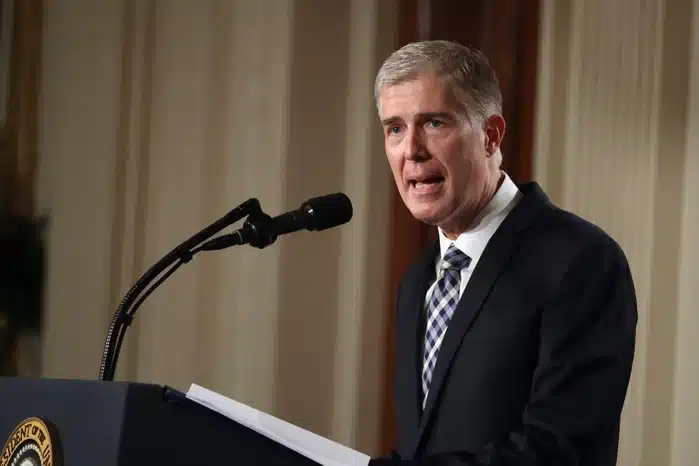Post-Roe, North Dakota puts resources into alternatives to abortion
North Dakota this year adopted one of the strictest abortion bans in the country, with narrow exceptions for rape and incest victims in the first six weeks of pregnancy and to save the life of the mother.
Although abortions-rights advocates haven’t given up the fight, abortion opponents are moving ahead with the restrictions and placing a heavier emphasis on supporting new mothers through legislation and services, such as maternity homes for pregnant women and teens.
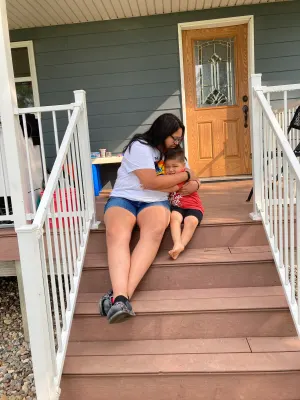
One of those teens is Molly Richards, who was just 13 years old when she learned she was pregnant.
She remembers feeling both “excited and oblivious” when she got the results at a clinic on the Pine Ridge Reservation in South Dakota, where she grew up. The community is home to the Oglala Sioux Tribe, of which Richards, now 17, is a citizen.
“It was a very happy time for me,” she recalled.
Then the reality of carrying and raising a child began to sink in. But Richards didn’t view abortion as an option.
“Abortion was not on my mind. That was a big no-no for me.”
Seeking resources, Richards and her family connected with Mary Pat Jahner, director of Saint Gianna & Pietro Molla Maternity Home in the small, unincorporated community of Warsaw.
The picturesque brick home – four stories tall and trimmed with ornate gold crosses – is an institution within the North Dakota anti-abortion movement.
Originally a convent for nuns and a boarding school, the home now serves young pregnant women – most from nearby Native American reservations. In addition to food and shelter, the facility provides counseling services, help completing high school, clothing, job training and parenting classes to mothers.
The facility houses two to four residents at a time. Richards was four months into her pregnancy when she arrived at the home.
“Our main purpose is just to provide a choice for moms who …might need a place to stay or might need a family,” Jahner said. “Most of the moms don’t have a safe place to be, they might be living couch to couch. They’re not living on the street per se, but they might not have their own place to call home.”
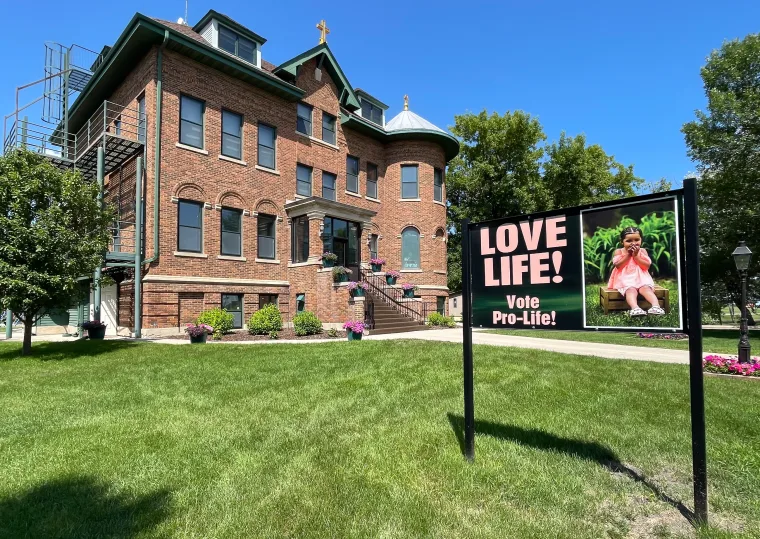
With abortions essentially unavailable in the state, where religion is deeply ingrained and diverse, efforts to support mothers and their children have taken on new prominence.
After the U.S. Supreme Court overturned Roe v. Wade in 2022 and returned abortion decisions to the states, researchers predicted the number of births would increase, as would the need to support pregnant people, young mothers and their children.
An analysis by the Johns Hopkins Bloomberg School of Public Health estimates that nearly 9,800 additional live births occurred in Texas from April 2022 through December 2022 after a six-week abortion ban took effect in that state in fall 2021.
The federal Congressional Budget Office has said it anticipates an increase in births because of the end of Roe but that contraceptive use and other abortion methods, such as medication abortion, will largely offset that increase.
Kathy Hirsh-Pasek, a psychology professor at Temple University and senior fellow at the Brookings Institution, doesn’t think the United States is prepared for an influx of births – and that policies nationwide aren’t doing enough.
“We are right now not a family friendly country. We may be pro-life, but we’re not pro-family. And if you’re going to make decisions that put more babies into the market, we need to support those babies,” she said. “I don’t care if you’re pro-Roe or anti-Roe, support children. They’re your future.”
Supporting pregnant people through legislation
State Sen. Sean Cleary, R-Bismarck, has been at the forefront of pushing for additional help for mothers and babies amid North Dakota’s abortion ban.
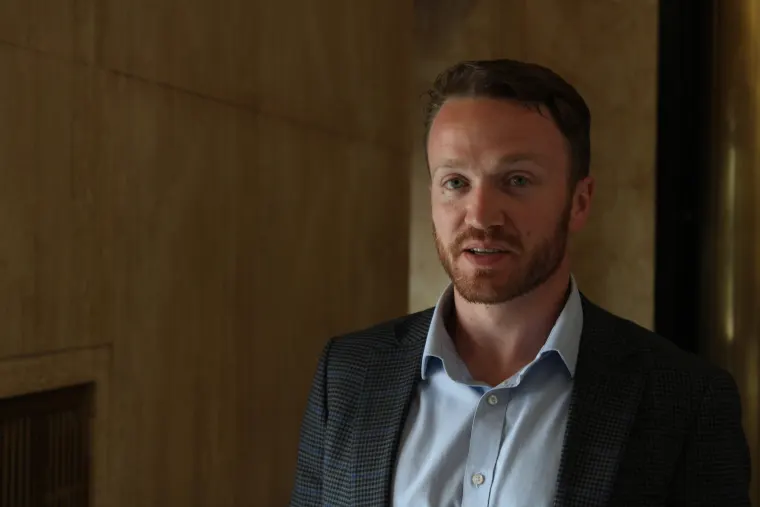
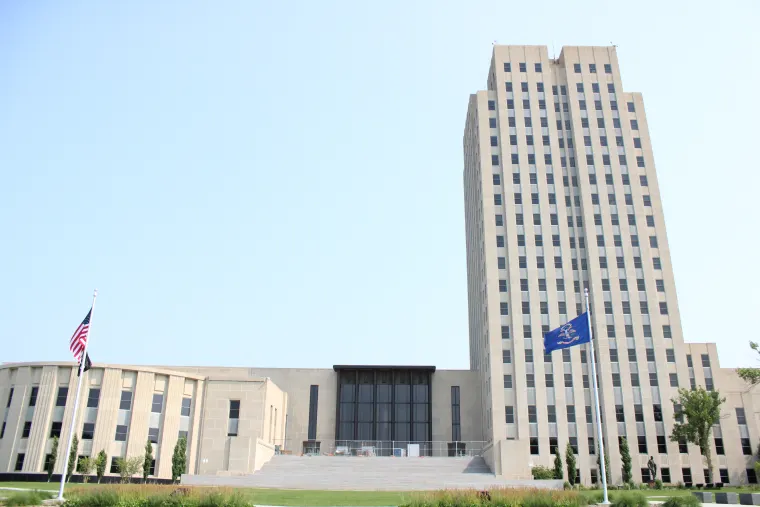
“There was an understanding that women are navigating a very difficult time in their lives, that the state could be doing more to support them and empower them,” Cleary said. “We wanted to be a state that was known for supporting families and supporting mothers.”
Gov. Doug Burgum, a Republican, signed bills this year to eliminate taxes on diapers; expand Medicaid and Temporary Assistance for Needy Families benefits for pregnant individuals; and provide additional funding to the state’s “alternatives-to-abortion” program, which gives funds to child-placement agencies, anti-abortion counseling centers and maternity homes – including Gianna & Pietro.
Cleary co-sponsored the diaper tax and Medicaid bills, as well as failed efforts to create a paid family leave program, a tax credit for child care expenses and a program to increase pay for child care workers.
The 31-year-old said being a father helped him see the need for this type of legislation. He has a toddler and another child on the way.
“Families can’t afford to send their kids to child care, and the workers can’t afford to work there,” he said.
Abortion-rights activists doubt the effectiveness of the few measures that made it through the Legislature.
“None of them are actually adequate to address fully supporting a pregnant person bringing a child into the world and raising a child to adulthood,” said Cody Schuler, advocacy manager for the American Civil Liberties Union of North Dakota.
“If you’re going to have a near-total ban on abortion and you’re going to force people to carry pregnancy to term, you have to do more than give a tax break for diapers.”
Katie Christensen, North Dakota state director for Planned Parenthood, emphasized the problematic funding of the alternatives-to-abortion program.
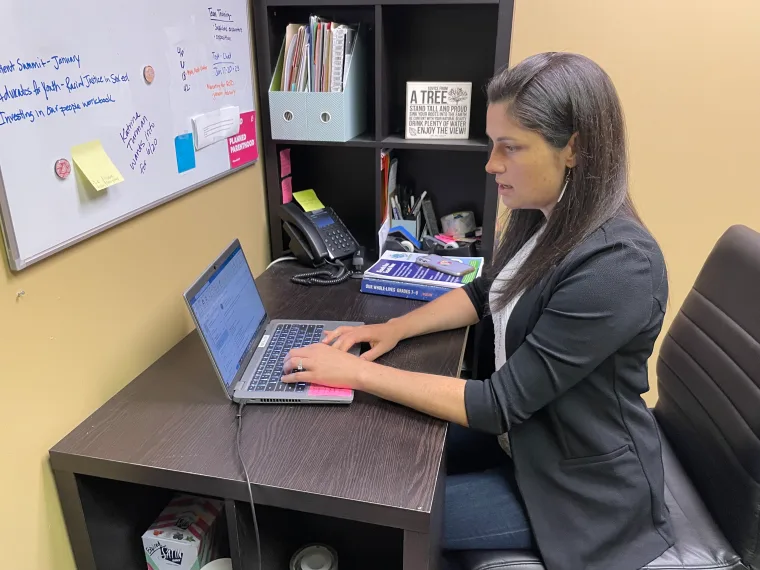
Christensen has criticized the program for providing $1 million in state funds to mostly religious ministries with little to no government oversight. State funding for so-called “crisis pregnancy centers,” which aim to dissuade people from getting abortions, is especially concerning to abortion-rights advocates.
There are at least seven such centers in the state, according to the Crisis Pregnancy Center Map, which provides nationwide tracking of these facilities and is maintained by University of Georgia professors.
“We’re putting thousands of public dollars into programming that aims to seek out people who want abortions and try to persuade them away from that,” Christensen said. “They’re still allowed to promote their religion while using these dollars.”
Despite this criticism, Sen. Tim Mathern, D-Fargo, one of only four Democrats in the 47-member state Senate, co-sponsored the alternatives-to-abortion funding bill, claiming that it “sort of became a litmus test between pro-choice and pro-life people.”
Although he supports abortion access, Mathern backed the bill in an attempt to change the tide of Democrats in North Dakota being seen as “the anti-religion and anti-God people and the people who kill babies.”
However, if concerns over these “crisis pregnancy centers” are legitimate, Mathern said, their practices should be evaluated and “the state’s attorney should be investigating.”
‘Small government’ approach to helping mothers
North Dakota’s Legislature meets for 80 days during odd-numbered years only. Legislators, who don’t have staff, work at their desks on the floor of the Senate or House. This model can mean less government funding for programs, something Republican state Sen. Janne Myrdal supports.
Myrdal represents far northeastern North Dakota, where the Gianna & Pietro home is located. She sponsored the state’s strict new abortion ban and co-sponsored the bill that beefed up funding to the state’s alternatives-to-abortion program. She warns that such funding comes with some strings attached.
“If you ask for that much support, then the government’s going to come on top of it and go, ‘We’re going to regulate you,’” Myrdal said. “You can’t pray for people, you can’t hug people, you can’t share Jesus with people who come in, because the government can’t do that.”
Gianna & Pietro, which is a nonprofit organization, receives the majority of its funding – about $500,000 to $600,000 each year – from individual donors, but it also has received funds from the state’s alternatives-to-abortion program.
In this year’s bill, about $100,000 was earmarked for the home; Jahner said the money will go toward updating vehicles and other needs.
In the nearly two decades of the home’s operation, more than 300 people have lived there, and over 100 children have been born as part of the program.
During a recent visit, three women who were either pregnant or young mothers, including Richards, lived at the home. Staff members stay on site, too, to provide support and help.
Jahner, her daughter, whom she adopted from a former resident, and several other children of former residents live on the property, as well, in a two-story home behind Gianna & Pietro.

Richards’ initial stay in 2019 only lasted a month. Feeling homesick, she returned to South Dakota to give birth. But after struggling to parent on her own and dropping out of school, Richards returned to Gianna & Pietro over a year and a half ago, with her son, Bernard, in tow.
Richards is now in the process of having her son adopted by a family in southern Minnesota, because, she said, “I wanted something more and better for my son.”
There is a clear religious aspect to Gianna & Pietro. Residents must attend Sunday Mass, take part in nightly prayer and participate in grace before meals. A stained glass chapel is located on the first floor of the home, and delicate religious paintings are scattered throughout. Across the street sits a steepled red brick church where residents may also attend Mass.
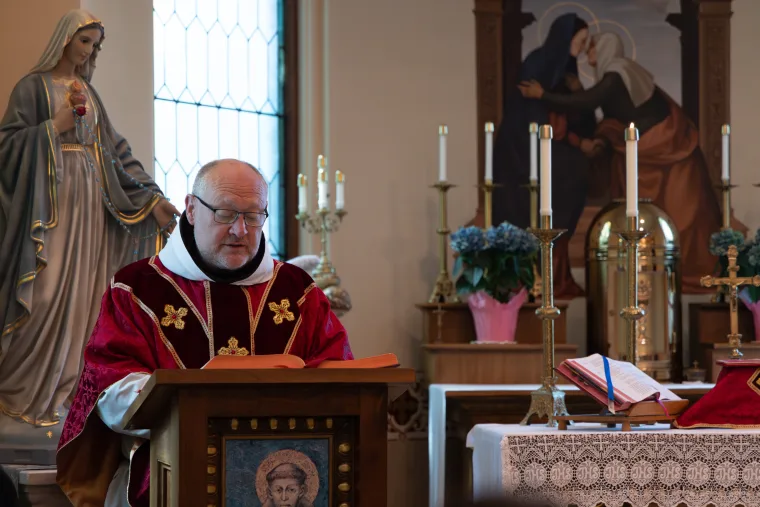
Although residents are not required to be Catholic or religious to live at the home, a question about religious preference is included on the admission application form and participation in religious activities is required.
“I didn’t become religious until I actually came here, so my family isn’t religious,” Richards said. “I was baptized (Catholic) a year and a half ago.”
Schuler, of the ACLU, and other abortion-rights advocates worry such religious requirements could lead to “coercing individuals into religion” with the help of government funding.
“When it comes to a maternity home, it’s being operated as a religious ministry. I don’t think state dollars should be paying for that,” Schuler said. “But at the same time, I know that there are individuals who are religious who might be looking for what that center might provide.”
Expansion of reproductive care in Minnesota
With limited capacity in homes like Gianna & Pietro, abortion care across the Red River in neighboring Minnesota remains essential, abortion-rights advocates say.
“The amount of pregnant people who are having their abortions today across the river would fill up those homes fivefold today – unless they’re going to open up huge apartment complexes to house all of these pregnant people,” said Destini Spaeth, board chair of the North Dakota Women in Need Abortion Access Fund.
Abortion is legal in Minnesota up to fetal viability, which is 24 to 26 weeks, and exceptions are granted to save the life or protect the health of the mother. Surrounded by states that have completely banned abortion or are in court fighting to prevent access, Minnesota has become a key state for abortion access in the Upper Midwest.
For nearly 25 years, Red River Women’s Clinic operated in Fargo and was the only abortion clinic in the state for two decades. Every Wednesday, when the clinic was open, protesters gathered with graphic signs outside the front door.
Then last year, after word of the Supreme Court’s likely end to Roe was leaked, its operators began looking for a new location. Last August, they reopened less than 3 miles away – across the river in Moorhead, Minnesota.
Each Wednesday, the clinic provides 25 to 30 abortions up to the 16-week mark of pregnancy. After that time, patients are referred elsewhere for a multiday procedure that the independent clinic lacks capacity for.
Since the move, the clinic has seen its patient load increase 10% to 15%, said Tammi Kromenaker, the facility’s director. And with fewer overall restrictions on abortion care in Minnesota, Kromenaker said she believes access has actually increased for women in North Dakota.
But the fear her patients feel has also gone up, she said.
“Every week, mostly patients from North Dakota will say: ‘Is it even legal for me to come here? Will I get legally prosecuted for this health care?’
Kromenaker continues to fight for abortion rights back across the river in North Dakota. Her clinic is one of the plaintiffs in a lawsuit over the state’s near-total abortion ban.
“We didn’t want to give up on North Dakota. We didn’t want to leave,” she said. “But our hand was forced.”
News21 reporters Trilce Estrada Olvera and Cassidey Kavathas contributed to this story.
This report is part of “America After Roe,” an examination of the impact of the reversal of Roe v. Wade on health care, culture, policy and people, produced by Carnegie-Knight News21. For more stories, visit https://americaafterroe.news21.com/.
The post Post-Roe, North Dakota puts resources into alternatives to abortion appeared first on Buffalo’s Fire.















